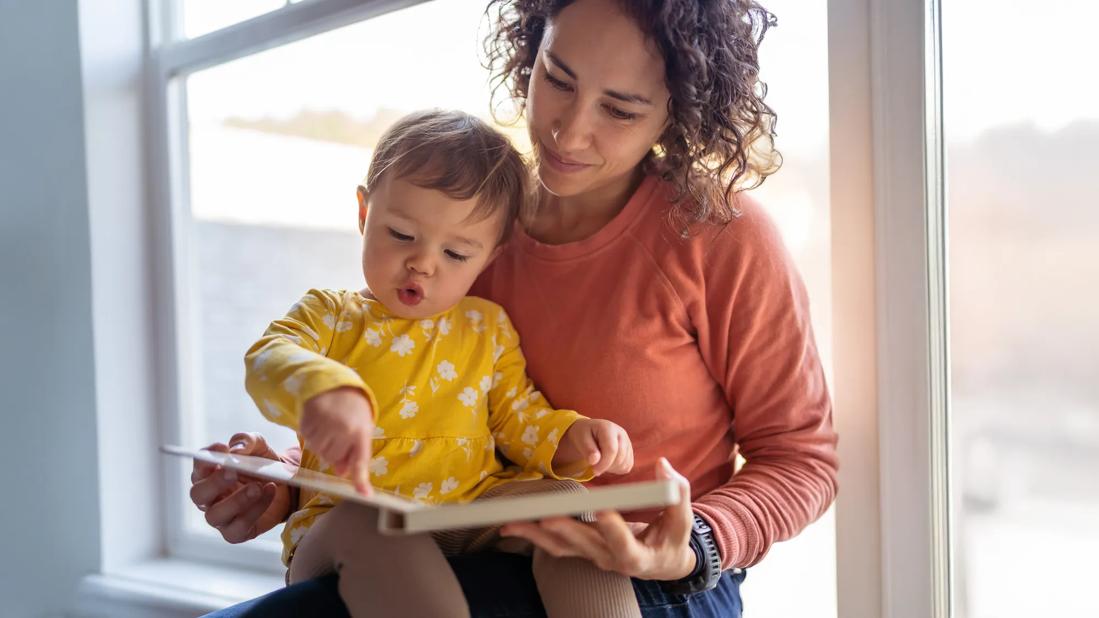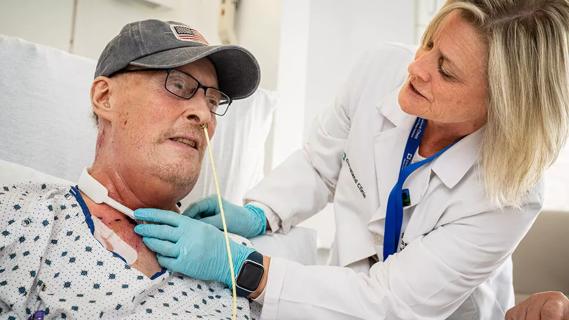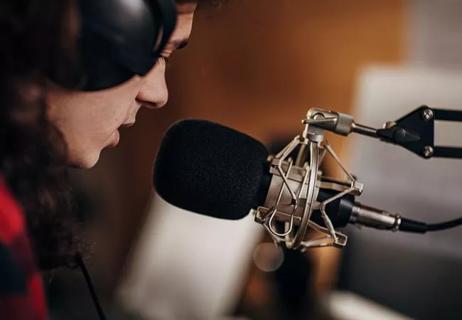Exploring the role of caregiver education and objective feedback on speech and language outcomes

What if parents and caregivers had access to objective feedback about their home language environment? Would it change the way they approach communication interactions with their children? These questions are central to a study now underway at Cleveland Clinic Children's.
Advertisement
Cleveland Clinic is a non-profit academic medical center. Advertising on our site helps support our mission. We do not endorse non-Cleveland Clinic products or services. Policy
Sarah Stanton, MA, a speech-language pathologist, designed the study and a companion caregiver education program. The idea for the study and education sessions came to her through her professional and personal experiences as a mom and clinician. In these roles, she became curious about strategies to support early speech and language development in neurotypical children.
"Babies are like sponges, and so much brain development happens between birth and 3 years of age. It occurred to me, why can't we create something that is more preventive to set children up for success? I really wanted to teach parents how to talk, read and play with their children in a way that supports that," she says. Stanton applied for and received funding for a Cleveland Clinic Catalyst Grant, and now she is doing just that.
Central to the project is the "conversational turn," a concept that formalizes the shared two-way communication experience that can begin as early as birth. In the virtual sessions, she teaches parents and caregivers the "serve and return" of communicating with young children. At a very basic level, the model requires that caregivers identify the child's "serve" by affirming it verbally or nonverbally and "return" it by explicitly naming or defining the object or person in question. Other tips include maintaining face-to-face contact, allowing for wait time and establishing a serve-and-return cycle.
Stanton says, "Parents often get blanket recommendations to ‘talk more’ or ‘read more’ to children.” While this is well-intended advice, research shows that it's the quality and not the quantity of the interaction that makes a long-term difference. She says the program offers specific strategies caregivers can use to incorporate serve-and-returns into daily life, from play time and routines like diaper changes, getting dressed and meals, to reading, screen time, and more.
Advertisement
Gregory P. Weaver, MD, MPH, a pediatrician at Cleveland Clinic and co-investigator of the study, agrees and says the model formalizes an important aspect of communication with children and is a useful tool to impart to parents and caregivers.
"That one-on-one interaction has benefits that parents may not see today or tomorrow, but over the long arc of the child's early life will have a profound effect," he says.
However, research also shows that parents tend to overestimate how much they talk with children. Talk & Turns, the name of the randomized controlled trial, aims to provide objective feedback on participants' home language environment and the child's expressive language skills. These data points are made possible with LENA© technology, a wearable device that captures adult spoken words, conversational turns and child vocalizations. "The technology is informally known as a 'talk pedometer," explains Stanton. It's a small device that the child wears to capture a full day of audio to provide data for these metrics.
Participants will be randomly assigned to a treatment or control group. Everyone who is enrolled will complete eight sessions total, including six 50/60-minute education sessions to learn evidence-based strategies to optimize communication in the home. It was important to Stanton and Dr. Weaver that both cohorts receive the available benefits, like access to the virtual education sessions and the feedback-generating technology. However, the control group will receive the feedback at the end of the trial period, rather than on a weekly basis.
Advertisement
Eligibility for the study includes child/caregiver dyads with a typically developing child aged 2 to 30 months, English as a primary language, a Windows device to complete LENA data uploads, and a Cleveland Clinic registered patient.
Experts already agree that early intervention is important to support speech and language development. But the role of technology and the frequency of the feedback report are a gray area. Further exploration could prove useful for optimizing outcomes in child/caregiver dyads.
Ultimately, Stanton says, these findings will help inform critical aspects of a successful caregiver education program. “We will be able to provide initial data about how a caregiver's language habits change when they are able to see real numbers for how much they are speaking with their child and how many conversational turns they are engaging in with their child.”
"The fundamental question," Dr. Weaver adds, "is why can't parents have that information? Does it need to be filtered through a speech therapist? And if you are getting feedback on a regular basis, does it have an added benefit?"
For more information about the Talk & Turns Study, contact Sarah Stanton at Stantos3@ccf.org.
Advertisement
Advertisement

Promoting accessibility for all children

Strong bonds and momentous milestones fuel life-changing work

Various AR approaches affect symptom frequency and duration differently

Modified Barium Swallow Study and Flexible Endoscopic Evaluation of Swallowing can both be used to diagnose dysphagia, but it’s important to understand their advantages and disadvantages

A closer look at select programs and services

Physicians in the field should tout an array of accomplishments to achieve well-deserved recognition

How lyric writing, song production is helping patients ‘reclaim their power’

Integrated care model reduces length of stay, improves outpatient pain management